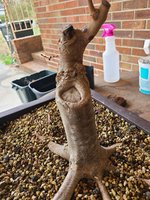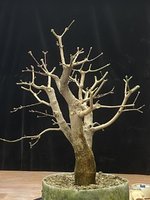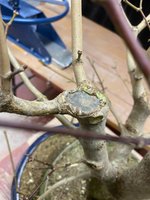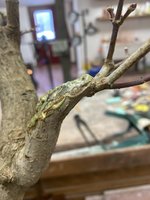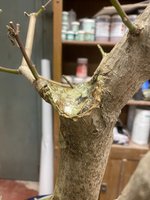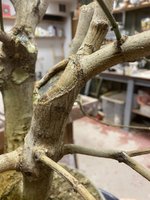D
Deleted member 24479
Guest
Got a few trident chops I need to finish carving. On the first chop, the callous has stopped rolling over. The second one I haven't worked yet. Should I go ahead and reopen them both now, or wait until spring after the first flush has hardened, to speed healing?
Also, should I remove the dead wood down to live wood inside the wound, or will the callous roll over dead wood? Apologies for my ignorance
Also, should I remove the dead wood down to live wood inside the wound, or will the callous roll over dead wood? Apologies for my ignorance

